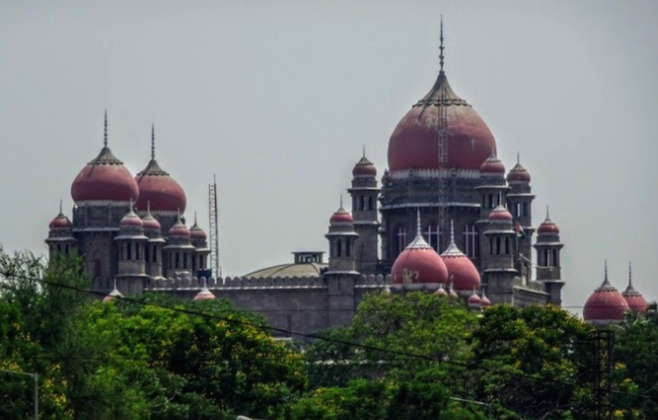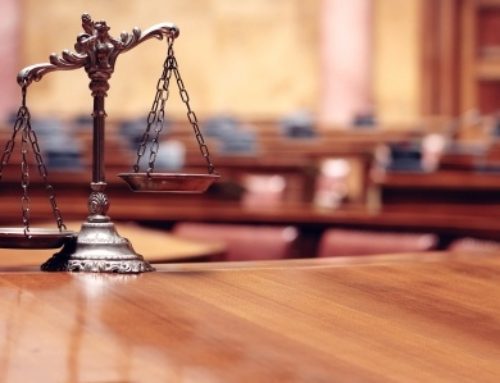In this post, Siddharth Sunil and Rama Ratna Sarma* discuss the socio-legal context in which the establishment of the new High Court in the state of Andhra Pradesh is mired. They provide reasons for deferral of the establishment of the High Court, and sensitize us about the urgency of executing the plan of establishing the High Court and the concomitant lower judiciary without any further dilly-dallying.
The hotly-contested subject of the bifurcation of the erstwhile State of Andhra Pradesh has today given way to a similarly contested tussle for the bifurcation of the common High Court and lower judiciary for the newly created states of Telangana and Andhra Pradesh alike. The bifurcation of erstwhile Andhra Pradesh was effected by the Andhra Pradesh Reorganization Act, 2014 (“the Act”) with effect from the 2nd June, 2014.
While separate legislative and the executive bodies have been created, this is yet to happen to the judiciary. It is pertinent to note that the Act is silent on the precise date by which the State of Andhra Pradesh is to have an independent High Court vide a Presidential Order. The Centre too, had declined to designate a date at the time the Andhra Pradesh Reorganization Bill was passed.
The path to bifurcation of the common High Court does not seem to be a rosy one, as it has given way to a multitude of issues such as decentralization of power and development of Rayalaseema. It is crucial to address the question of the requirement of an independent High Court for Andhra Pradesh before the specific issues relating to the bifurcation are addressed.
The Need for an Independent High Court for the State of Andhra Pradesh
Article 214 of the Indian Constitution provides that each State shall have a High Court. However through a non-obstante clause, Article 231 of the Constitution permits the Parliament to establish, by law, a common High Court for two or more states. Hence, in the current constitutional scheme there can either be a separate High Court for each state or a common High Court for two or more states. The pattern of current High Courts in India and the language of the aforementioned Constitutional provisions suggest that an independent High Court for each state has been the norm, while a common High Court for two or more states has been an exception. It is this context that the need for an independent High Court for Andhra Pradesh must be addressed.
Firstly, it is pertinent to note that barring the judiciary the other branches of the state have already been bifurcated and are operating from Amaravati in Andhra Pradesh. An independent High Court in Amaravati would ensure the presence of all three pillars of the state in Andhra Pradesh thereby contributing to effective governance of the State. It would also contribute to effective and speedy adjudication of cases. Considering that the Government is a party to a substantial number of cases before the High Court, and that the headquarters of most Government departments are situated in Amaravati, establishing an independent High Court –in Amaravati for instance— would certainly streamline communication between the High Court, Government Counsel and the Government departments.
Secondly, an independent High Court would be beneficial to the people of Andhra Pradesh, as this will rid them of the necessity to travel all the way to Hyderabad (now located in a different state) for their matters in the High Court. This would be a welcome shot in the arm for access to justice, especially if one notes that various districts, like Srikakulam and Vizianagaram, are located 650 to 750 kilometres from Hyderabad. On the other hand, the setting up of an independent High Court in Amaravati is a pragmatic middle-ground, owing to the fact that, geographically, it is nearly at the centre of Andhra Pradesh, thus making it far more accessible to the people of Andhra Pradesh vis-à-vis Hyderabad.
Finallyconsidering that, in the current constitutional framework, a separate and independent High Court for each state is the rule and a common High Court for two or more states is an exception. Further, section 31 of the Act explicitly envisions a split in the incumbent common High Court, which makes it amply clear that the Centre’s intent was, indeed, to play by the norm, not the exception.
Non-Action of bifurcation of the common High Court and the lower judiciary
Among the several reasons that have contributed to the protracted delay in bifurcation, two reasons emerge as dominant: first, the lack of consensus over a permanent location for the proposed High Court of Andhra Pradesh; second, the reservations regarding the proposed manner of division of judicial officers and staff between the two states’ subordinate judiciary, a matter presently sub judice in the Supreme Court by way of a writ petition.
The choice of the state Government to locate the High Court in Amaravati has attracted severe criticism from the Rayalaseema region of the state. While multiple reports suggest that Vijayawada is all but the final choice to house the interim Andhra Pradesh High Court (until a permanent fixture is erected in capital Amaravati), this turn in events has not found favour with a section of advocates from the Rayalaseema region, who posit that the new High Court should be located in the town of Kurnool, and not Vijayawada or, ultimately, Amaravati.
The primary contention of the protesting advocates is that the centralizing of legislative, executive and judicial powers in Amaravati would not aid the development of Andhra Pradesh. Further, according to Kurnool District Bar Association President Jayaraju Yeggoni, Hyderabad must be held up as an example of how concentration of power in and around one city would be counter-productive to development. This is not a novel contention. It traces its origins to 1937, when the Sribagh Pact was entered into by the elders of Coastal Andhra and Rayalaseema. Thus, it would be unwise to dispel these averments as being merely impulsive, and these views ought to have been adequately addressed, even if they were to be subsequently rejected.
Further, the protesters aver that the setting up of the Andhra Pradesh High Court in Kurnool would immensely influence development in the presently “underdeveloped” town. This contention certainly has its merits, as locating the High Court in Kurnool would certainly contribute to increased employment opportunities and trade activities in and around Kurnool, which would greatly contribute to the development of Rayalaseema. Thus, this contention ought to have been adequately addressed by the Government before dispelling it as being impulsive, even if was rejected.
The authors opine that Amaravati is better-suited than Kurnool to locate the new High for two reasons. First, the location of Amaravati, which is almost at the centre of the state, is more accessible for the people of Andhra Pradesh as compared to Kurnool, which is located in the north-west region of the state, which fact alone makes it inaccessible for residents from the diametrically opposite regions of the state. Second, most headquarters of the departments of the state Government are located in Amaravati which would, as pointed out earlier, result in speedier adjudication of cases, since the Government is a party to a substantial number of them.
The other major roadblock on the common High Court’s path to bifurcation is the predicament of dividing and allotting members of different cadres and classes of posts in the subordinate judiciary to the two states. In early May 2016, the registrar-general of the common High Court issued a provisional list indicating the allocation of officers in the prospective subordinate judiciaries in the two states. This list allocated nearly 540 judicial officers to Andhra Pradesh, and 366 to Telangana. However, nearly half of the officers allocated to Telangana (viz. 142 officers) by this list were of Andhra origin, per their application forms. These officers consisted of district judges and senior and junior civil judges. This sparked a major agitation within the ranks of Telangana’s subordinate judiciary, and a sizable number of Telangana’s district judges and court employees went on strike for nearly a week. The principal contention of the agitators was that senior district judges of Andhra origin would, in effect, gain precedence over their Telangana-origin counterparts, thus superseding the latter while being considered for elevation to the High Court. Another criticism of the provisional list was that it was ultra vires the mandate of the Act in that it was the Centre, and not the Chief Justice of the common High Court, in consultation with the puisne judges, that had the authority to prepare such a list under sections 77 and 80 of the Act
The agitation was followed by the filing of a writ petition in the Supreme Court by the Telangana Judges’ Association. The Supreme Court, in April 2017, directed the Centre to prepare draft guidelines on the allocation of subordinate Judges in consultation with the common High Court and concerned stakeholders. This is the only significant development in the hearing of this writ petition as of the date of writing this piece.
A Need for Closure
Three judicial committees were set up earlier this year. Two of these committees are to oversee the location of the new High Court and the bifurcation of the subordinate judiciary. It is pivotal for these committees to ensure that the subordinate judicial officers are allocated between the states at the earliest, for a meaningful bifurcation of the common High Court to take place at the earliest. Non-action of the former would lead to an absurd scenario where there are two High Courts and a common subordinate judicial service, which would lead to complicated questions, viz. jurisdiction over appeals and territory, at the very least, among other problems such as the potential for overlapping of jurisdiction of the two High Courts over pivotal matters such as appointments, promotions and dismissal of judges and other administrative functions pertaining to the subordinate judiciary.
The present quandary is no longer a transitional one. Too much time, judicial and public, has been squandered, and the need of the hour is closure. Attempts to expedite the bifurcation of the incumbent common High Court, coupled with according due consideration to the views of the various stakeholders involved, would go a long way towards easing the long-drawn transition for the two states, and would lend the third pillar of the two governments the stability it so desperately needs and deserves.
*The authors are B.A. LL.B. (Hons.) students at NALSAR University of Law, Hyderabad.







Leave A Comment